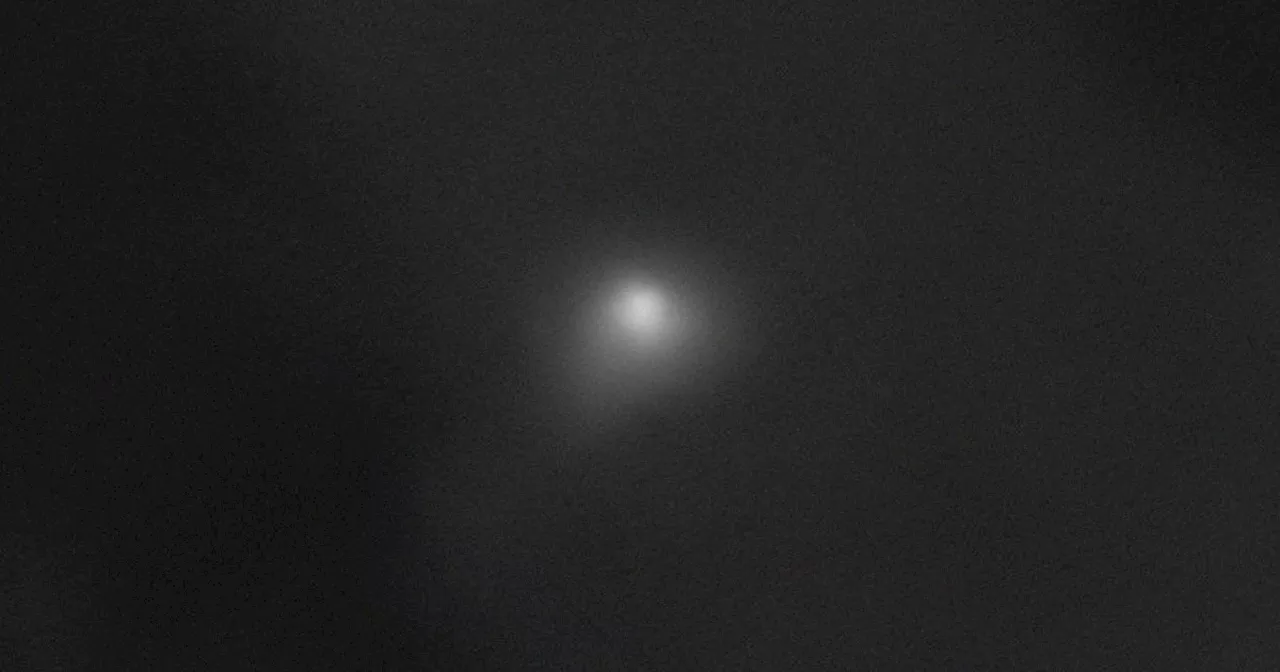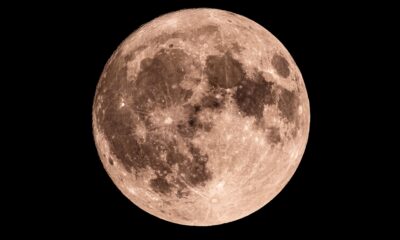Science
NASA Unveils Stunning Images of Interstellar Comet 3I/ATLAS

NASA has released a series of captivating images of the interstellar comet 3I/ATLAS, following its close encounter with Mars last month. This event provided a unique opportunity for scientists to observe the comet’s coma, a cloud of gas and dust surrounding the nucleus, as it passed just 19 million miles from the planet.
The release of these images was initially delayed due to the recent US federal government shutdown, which ended earlier this month. Lawmakers and astronomers expressed frustration over the postponement, as the scientific community eagerly awaited data from the HiRISE camera aboard the Mars Reconnaissance Orbiter.
During a livestream event, NASA’s Associate Administrator, Amit Kshatriya, presented the findings. One notable image captured on October 2, 2023, depicts the comet as a “fuzzy white ball.” Kshatriya explained that this appearance is characteristic of the coma, which is formed as the comet sheds material. The image resolution is approximately 19 miles per pixel, allowing for detailed analysis.
According to Shane Byrne, principal investigator of the HiRISE project at the University of Arizona, observing interstellar objects like 3I/ATLAS is a rare occurrence that continually enriches scientific understanding. “We’re fortunate that 3I/ATLAS passed this close to Mars,” Byrne noted. This observation may help determine the size of the comet’s nucleus and provide insights into the particles present in its coma.
Additional observations were made by the Mastcam-Z instrument on NASA’s Perseverance Mars rover, capturing images of the comet traveling at an impressive speed of around 137,000 mph on October 4, 2023. Moreover, the MAVEN spacecraft detected hydrogen gas emissions from the comet as it approached Mars in late September.
Kshatriya addressed speculation regarding the comet’s nature during the livestream. Some theories, notably promoted by Harvard astronomer Avi Loeb, suggested that 3I/ATLAS could be an alien spacecraft. Kshatriya firmly stated, “This object is a comet. It looks and behaves like a comet, and all evidence points towards it being a comet.”
Looking ahead, 3I/ATLAS is expected to make its closest approach to Earth on December 19, 2023. This forthcoming event will provide NASA with another opportunity to observe the comet and gather further data.
The release of these images marks a significant milestone in the ongoing study of interstellar objects, offering a glimpse into the mysteries of our solar system and beyond.
-

 Technology5 months ago
Technology5 months agoDiscover the Top 10 Calorie Counting Apps of 2025
-

 Technology3 weeks ago
Technology3 weeks agoOpenAI to Implement Age Verification for ChatGPT by December 2025
-

 Health3 months ago
Health3 months agoBella Hadid Shares Health Update After Treatment for Lyme Disease
-

 Health3 months ago
Health3 months agoAnalysts Project Stronger Growth for Apple’s iPhone 17 Lineup
-

 Health4 months ago
Health4 months agoErin Bates Shares Recovery Update Following Sepsis Complications
-

 Technology5 months ago
Technology5 months agoDiscover How to Reverse Image Search Using ChatGPT Effortlessly
-

 Technology3 months ago
Technology3 months agoElectric Moto Influencer Surronster Arrested in Tijuana
-

 Technology5 months ago
Technology5 months agoMeta Initiates $60B AI Data Center Expansion, Starting in Ohio
-

 Technology2 months ago
Technology2 months agoDiscover 2025’s Top GPUs for Exceptional 4K Gaming Performance
-

 Technology5 months ago
Technology5 months agoRecovering a Suspended TikTok Account: A Step-by-Step Guide
-

 Health5 months ago
Health5 months agoTested: Rab Firewall Mountain Jacket Survives Harsh Conditions
-

 Lifestyle5 months ago
Lifestyle5 months agoBelton Family Reunites After Daughter Survives Hill Country Floods





















